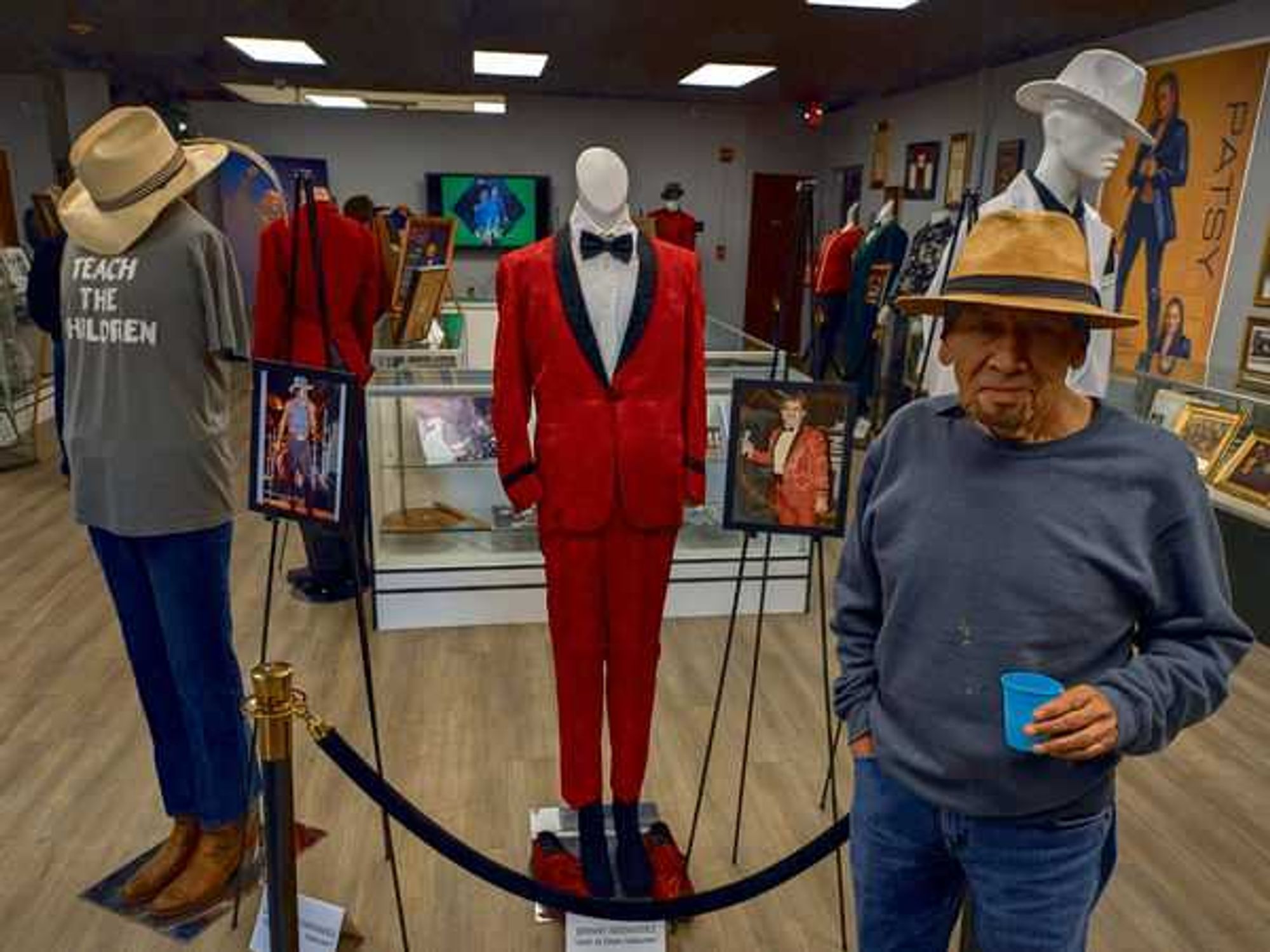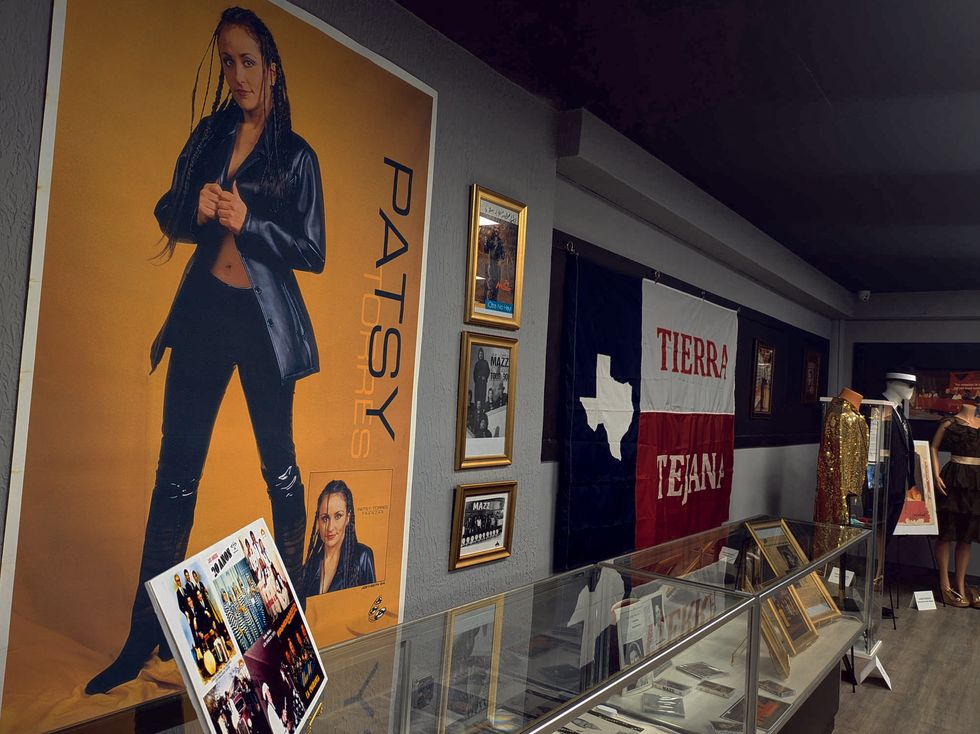Travelin' Man
King Ranch's pure Texas power: It's lost in time, somewhat wildlife barbaric &still snake phobic
 The King Ranch maintains a small herd of Texas longhorns.Photo by Stephan Lorenz
The King Ranch maintains a small herd of Texas longhorns.Photo by Stephan Lorenz The King Ranch owns 800,000 acres of south Texas brush country with its wideopen skies.Photo by Stephan Lorenz
The King Ranch owns 800,000 acres of south Texas brush country with its wideopen skies.Photo by Stephan Lorenz Old saddles are on display at the museum in Kingsville. You can also buyexpensive riding gear at the King Ranch store.Photo by Stephan Lorenz
Old saddles are on display at the museum in Kingsville. You can also buyexpensive riding gear at the King Ranch store.Photo by Stephan Lorenz Numerous old buildings on the ranch attest to its long history. The name acrossthis particular building refers to the original name of the ranch.Photo by Stephan Lorenz
Numerous old buildings on the ranch attest to its long history. The name acrossthis particular building refers to the original name of the ranch.Photo by Stephan Lorenz Tours leave from the visitor center on the Santa Gertudis Division, one of fourhuge parcels of land owned by the King Ranch.Photo by Stephan Lorenz
Tours leave from the visitor center on the Santa Gertudis Division, one of fourhuge parcels of land owned by the King Ranch.Photo by Stephan Lorenz Visitors can join daily tours that drive around the ranch for a few hours.Photo by Stephan Lorenz
Visitors can join daily tours that drive around the ranch for a few hours.Photo by Stephan Lorenz The majority of cattle on the King Ranch are Santa Gertrudis, a unique breedable to withstand the harsh subtropical climates of south Texas.Photo by Stephan Lorenz
The majority of cattle on the King Ranch are Santa Gertrudis, a unique breedable to withstand the harsh subtropical climates of south Texas.Photo by Stephan Lorenz People visiting the famous King Ranch hail from all over the United States andthe world.Photo by Stephan Lorenz
People visiting the famous King Ranch hail from all over the United States andthe world.Photo by Stephan Lorenz The whitewashed walls of the King Ranch mansion stand in stark contrast to therough mesquite country stretching for miles and miles around it.Photo by Stephan Lorenz
The whitewashed walls of the King Ranch mansion stand in stark contrast to therough mesquite country stretching for miles and miles around it.Photo by Stephan Lorenz
I have lived in Texas for more than a decade now, and I have traveled south along US-77 a dozen times. But I had never stopped at the King Ranch before.
Apparently everybody else did, though. I picked out bits of Russian, Dutch, and German from the crowd filing onto the tour bus. Another family had traveled from Louisiana, and a few folks from states beyond. Even celebrities and royalty had caught on, with the Red Hot Chili Peppers and Prince Albert visiting recently.
My fiancé Claudia and I took a front row seat on the crowded bus, eagerly breathing in the AC as temperatures soared to 105 degrees in the parking lot.
Our guide grew up on the ranch, her family’s roots reaching deep into the 19th century — when her great-grandfather worked there as a cowboy. After a short stint in the army, she was back home. She invited questions as the bus rolled down narrow pavement toward a gated entrance.
Ranch, with a side of longhorns
I scanned the savanna-like pastures rolling toward distant lines of trees, half expecting to see grazing zebras and stalking lions. Then I reminded myself that this was an actual working ranch.
A visit to the King Ranch should be taken with a grain of salt. But its almost blind frontier spirit is still alive — from the overpriced gift shop all the way to the dust collecting on the museum’s stuffed alligator.
In fact, the King Ranch remains one of the largest working ranches in the world. During its peak, it encompassed 1.2 million acres of south Texas brush country. Today, it consists of four large divisions — mainly in Kennedy and Kleberg Counties — still encompassing more than 800,000 acres. Captain Richard King went from being an orphan to a stint as a steamboat captain to becoming one of the richest men in the United States, after founding the ranch in 1853.
At the first stop, we could see two Texas longhorns sitting under a tree, moving as much as a rock. During the 1870s, these hardy bovines once roamed the King Ranch, but today, they're just kept for tradition's sake. Apparently Henrietta King, the ranch’s matriarch, had a fondness for longhorns and an abhorrence of rattlesnakes. In addition to demanding cultured behavior and religious reverence in her house, she placed a bounty on rattlesnakes.
To shoot or to view — that is the question
The main villa stands in stark contrast to the rough surroundings. Whitewashed walls and hallways rise among old oaks to a gleaming tower of Mediterranean architecture. Peacocks patrol the grounds — apparently to keep guests safe from snakes. The manicured lawns come to an abrupt end along the edge of mesquite thickets, stretching for miles all the way to the coast.
Driving past endless pastures, we saw groups of cherry-red Santa Gertrudis cattle, a pure breed developed on the King Ranch in the early 20th century. The crowd on the bus nodded in agreement as we slowly passed one of the massive bulls, uniquely adapted to the harsh tropical climates.
Hunters can visit other sections of the ranch for a shot at quail, deer, javalinas, and even introduced game animals. Our guide eagerly scanned the brush for more wildlife, but except for some skittish deer, that was it.
If you are like me and shooting at wildlife is not your idea of fun, the ranch also offers wildlife viewing tours.
The tour ended with glimpses of a cowboy field camp, the rodeo arena and the housing complex where workers live.
History with a grain of salt
The small museum back in Kingsville houses various antique cars owned by the Kings, beautiful black-and-white photographs of ranch life, and an assortment of guns, saddles, flags and a few taxidermies.
Tourism is only a small branch of the King Ranch, which today derives its main income from hunting, beef, oil and gas.
The King Ranch seems to be stuck in time. Full of traditions, debatable wildlife practices and slightly inaccurate history (for example, snakes are still killed, and no one mentions the original owners of the lands), it sticks to its roots unlike any other place in Texas.
A visit to the King Ranch should be taken with a grain of salt. But its almost blind frontier spirit is still alive — from the overpriced gift shop all the way to the dust collecting on the museum’s stuffed alligator.

 The newly opened Totally Tejano Hall of Fame and Museum includes a growing collection of memorabilia. Photo by Edmond Ortiz
The newly opened Totally Tejano Hall of Fame and Museum includes a growing collection of memorabilia. Photo by Edmond Ortiz